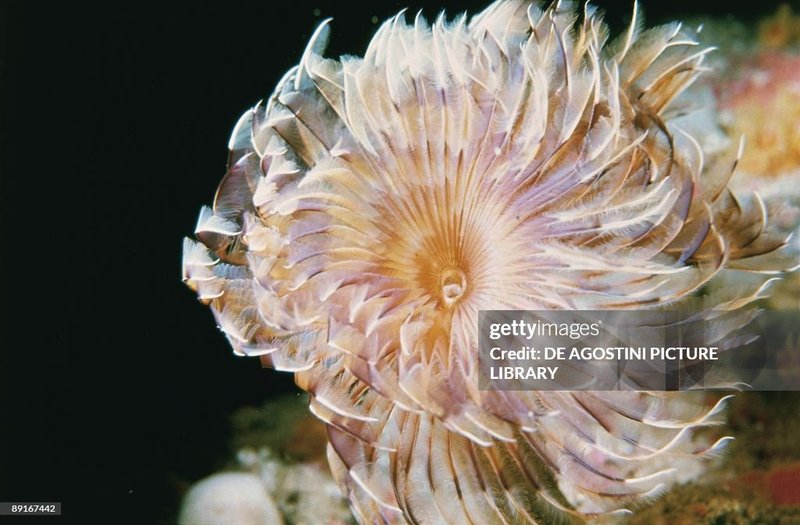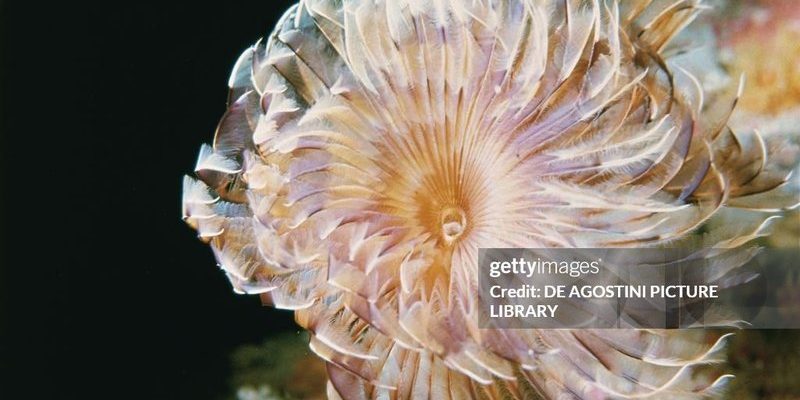
Imagine a tiny, underwater garden filled with soft, flowing fans waving gently in the current. That’s what you’ll find when looking at a colony of Sabellid fan worms. They are like the flowerbed of the ocean, their fan-like structures not only stunning but also essential for their feeding and survival. Let’s dive into their habitat preferences and see what makes these creatures tick.
Understanding Sabellid Fan Worms: A Quick Overview
Before we get into their habitat preferences, let’s take a moment to understand what Sabellid fan worms actually are. These marine creatures belong to the family Sabellidae and are known for their distinctive fan-shaped crowns. They can be found in various marine environments, from shallow coastal areas to deeper ocean floors.
What’s really interesting is their feeding mechanism. They use their fringed tentacles to filter food particles from the water, which is essential for their survival. These tentacles not only help them catch food but also play a role in their social interactions, attracting mates and other fan worms to their space.
So, where do these little wonders make their homes? Let’s explore their habitat preferences to understand what environments suit them best.
Preferred Environments of Sabellid Fan Worms
The Sabellid fan worm is quite adaptable and can thrive in various marine environments. However, they do have specific preferences that are worth noting. Generally, they tend to favor soft substrates, like mud or sand, where they can burrow and anchor themselves securely.
You might encounter these worms in areas that have moderate water movement. They like places where the flow is just right—too strong can wash them away, while too weak might not provide enough food. These conditions make coastal regions or estuaries ideal for their growth and reproduction.
Here are a few common environments where you might find Sabellid fan worms:
- Shallow coastal waters
- Intertidal zones
- Seagrass beds
- Coral reefs
- Estuarine environments
Each of these habitats offers unique conditions that cater to the needs of the Sabellid fan worm, making them a remarkable addition to the marine ecosystem.
Importance of Substrate Type for Sabellid Fan Worms
One of the critical factors in the habitat preferences of Sabellid fan worms is the type of substrate they call home. As mentioned earlier, these worms typically prefer soft, sandy, or muddy substrates. This preference is due to a few reasons.
First, a soft substrate allows Sabellid fan worms to burrow and create a secure living space. This not only protects them from predators but also provides stability during strong currents. Think of it like how we build our homes—stable foundations are key.
Additionally, the substrate type contributes to their feeding strategy. The sediment can harbor organic materials that serve as food sources. When they filter feed, they can catch more nutrients from the water above, benefiting from whatever settles down into their cozy, burrowed home.
Water Quality and Temperature Preferences
Water quality and temperature are also significant in determining habitat preferences for Sabellid fan worms. These worms thrive in clean, clear waters, where particulate matter allows them to filter-feed effectively. Polluted waters can be detrimental to their health, as toxins can accumulate in their bodies.
As for temperature, Sabellid fan worms prefer warmer waters, typically between 20°C to 30°C (68°F to 86°F). You might find them in tropical or subtropical regions, where conditions are just right for their growth and reproduction.
So, if you’re wandering around a tropical beach and you spot a cluster of these fan worms waving their tentacles in the current, know that you’re witnessing a perfect match of creature and environment!
Role of Currents and Tides
Currents and tides play a vital role in the habitats of Sabellid fan worms. These creatures thrive in areas with moderate current, which helps to bring them the food they need while also ensuring they’re not swept away.
When the water moves, it stirs up nutrients and food particles, making it easier for the worms to feed. However, strong currents can be harmful. If the current is too powerful, it could dislodge them from their burrows, leaving them vulnerable. Essentially, the right balance of flow is crucial for their survival.
Tides are important as well. During high tide, Sabellid fan worms might find themselves submerged, giving them access to more food and protection from predators. As the tide recedes, they remain safe in their homes, waiting for the next high tide.
Interactions with Other Marine Life
Sabellid fan worms don’t exist in isolation; they’re part of a bustling community of marine organisms. Their habitat preferences often overlap with those of various species, leading to interesting interactions.
For example, they are often found alongside other filter feeders, like oysters and clams. These creatures can benefit from one another—sharing the same nutrient-rich waters boosts everyone’s chances of survival. You could think of it as a community potluck, where everyone brings something to the table!
On the flip side, they do have to watch out for predators. Fish, crabs, and even some sea stars see these worms as tasty snacks. Their ability to burrow into the substrate provides them with some protection against these threats.
How Habitat Preferences Affect Conservation Efforts
Understanding the habitat preferences of Sabellid fan worms is essential for conservation efforts. As marine ecosystems face challenges from climate change, pollution, and habitat destruction, protecting these worm habitats becomes increasingly important.
Efforts to safeguard soft substrates in coastal areas can help maintain healthy populations of Sabellid fan worms. Restoration projects for seagrass beds and coral reefs also aid their survival by improving overall water quality and stability in these environments.
By preserving their preferred habitats, we’re not just helping the fan worms; we’re also supporting the entire marine ecosystem they belong to. Healthy habitats mean thriving communities, and that’s good for everyone involved—humans included!
In summary, the habitat preferences of Sabellid fan worms reveal a lot about how these small creatures interact with their environment. They thrive in soft substrates, moderate currents, and clean, warm waters, making them vital players in their ecosystems. Their unique feeding strategies and interactions with other marine life enhance the biodiversity around them.
The next time you’re near the ocean, take a moment to appreciate the tiny wonders of the underwater world. These fan worms may be small, but they contribute significantly to the health of marine ecosystems. Protecting their habitats ensures not just their survival, but the well-being of many other species that share their home. And isn’t it fascinating how delicate and interconnected our marine environments really are?

